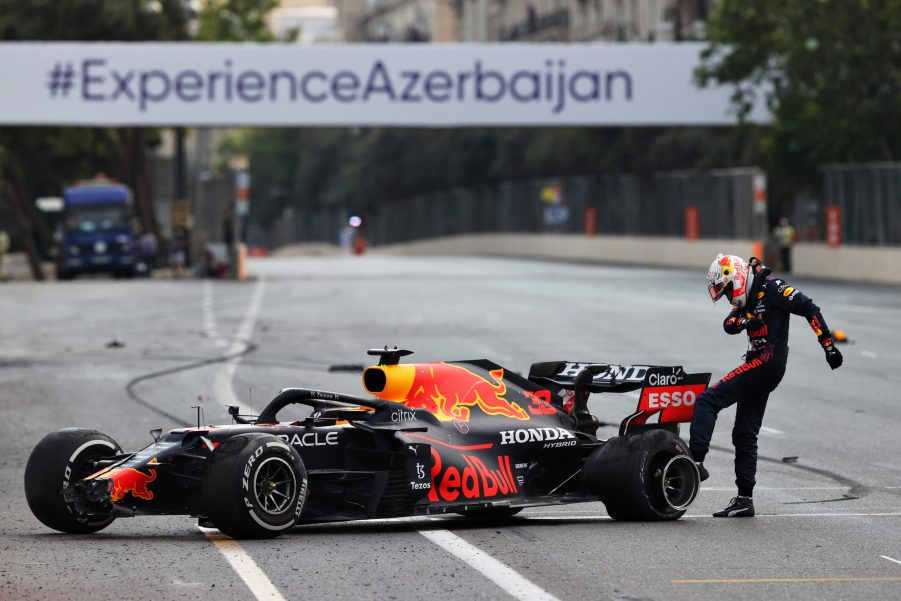
Pirelli Has Some Explaining to Do After Last Weekend’s Azerbaijani Grand Prix Blowouts
216 miles an hour is fast. Really fast. That number is how fast Formula 1 cars, shod in Pirelli rubber, get going down the main straight at Baku City Circuit. The main straight, along with the tight winding second half of the track is exactly what can make the Azerbaijan Grand Prix so dangerous. F1 is already a dangerous sport, and the track at Baku only contributes to that danger. Now, add to this unreliable tires that detonate under the high loads of Formula 1 racing, and you’ve got a recipe for a massive accident.
How Pirelli’s F1 tires work

The speeds seen at Baku and other fast tracks, like Circuit De Spa-Francorchamps, subject the tires of a Formula 1 car to massive forces. As the cars speed up, the rubber begins to literally pull itself from the wheel due to the centripetal force. And then there’s the heat. It isn’t uncommon for tires to only function above 212 degrees Farenheight.
When combined, these extreme speeds and temperatures call for a very durable tire. This is where Pirelli comes in. Currently, they are the sole supplier of tires in F1. The Italian company has been since 2011. Pirelli has been doing a great job, creating tires that last longer and withstand the extreme forces the tires are subjected to over a lap very well. But what if, suddenly, they didn’t anymore. What if those tires failed at speed?
What happened in Azerbaijan

This is exactly what happened to Aston Martin’s F1 driver, Lance Stroll on Sunday. On the 31st lap of the 51 lap race, Stroll’s Aston Martin shot into the concrete barriers at nearly 200 MPH. Just 10 years ago, a crash like that would have been fatal. Happily, Stroll emerged unhurt. However, even as the race continued to unfold, commentators and drivers alike were questioning Pirelli for the advice the teams were given ahead of the race.
Teams were told to increase tire pressures before the race by the manufacturer. Some teams are even saying this one psi change could have caused Stroll’s blowout, not debris like Pirelli say. Then came Max Verstappen’s crash. At over 200 MPH, Max’s tire failed, sending him straight into the concrete barriers on lap 47. Verstappen was leading not only the race, but the Driver’s Championship as well, leaving his rival, Lewis Hamilton to claim the win.
What it means for the championship

Luckily for Verstappen, Lewis crashed out a lap later, due to a brake issue. This leaves the championship too close to call, with Max only 10 points ahead. But the championship battle wasn’t the headline for the day. The dichotomy between Pirelli’s claims of debris and team’s anger at Pirelli for poor performance has left some questioning the role the tire maker will play in F1.
Drivers have also complained that the newer tires are much heavier, with Lewis Hamilton saying that the tires are too heavy and slow for the cars. Add to that concerns over their durability, and Pirelli must quickly prove that debris was the cause. Big crashes like the ones at Baku are uncommon in F1, but with so little margin for error, they do happen. Now, Pirelli and the sport’s governing body, the FIA, must do all they can to prevent further tire issues.


